Definition of Genetic Engineering, Types, Processes, Techniques & Impacts
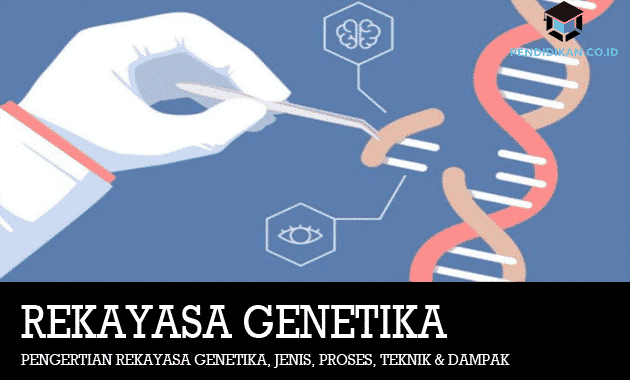
Definition of Genetic Engineering
Genetic engineering is a biotechnology which includes a genetic modification, gene manipulation, DNA recombinants, technology as well as gene cloning and modern genetics by using all kinds procedure. However, for the term genetic engineering broadly it is to describe the manipulation/transfer of the gene by means of: make that recombinant DNA by inserting a gene in an attempt to get a better new product or superior. This recombinant DNA is the result of combining 2 genetic material from 2 different organisms and also have the desired traits, characteristics, or functions so that the receiving organism expresses traits or functions that are in accordance with what we want want.
Objects used in genetic engineering are generally almost all groups of organisms, ranging from simple to complex levels. The superior organisms produced in the genetic engineering process are referred to as transgenic organisms.
The birth of genetic engineering originated from an effort to be able to reveal genetic material that is inherited from one generation to the next. When people know that chromosomes are the genetic material that carries genes, that's when genetic engineering appears.
Classification of Types of Genetic Engineering
Genetic engineering is one of the developments of reproductive technology in an effort to change genes so that organisms with better quality are then produced. There are several types of genetic engineering, including:
1. DNA recombination

This DNA recombination is a technique of separating and also merging DNA from that 1 species with DNA from other species with the aim of being able to obtain better new traits or superior. Below are some of the products resulting from gene recombination.
-
Insulin Manufacturing
This insulin is produced from the recombination of human cell DNA with the E. Coli bacterial plasmid. The insulin produced is purer and also well accepted by the human body because it contains human protein compared to insulin which is synthesized from animal pancreas genes. -
Hepatitis Vaccine Manufacturing
This hepatitis vaccine is produced from recombinant human cell DNA with Saccharomyces yeast cells. The vaccine produced is in the form of a weakened virus and when injected into the human body will form antibodies so that it is immune to hepatitis attacks.
2. Cell Fusion
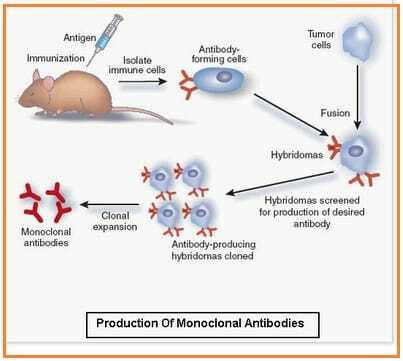
Another term for cell fusion is known as hybridoma technology. This cell fusion is a fusion of 2 different cells into 1 into a protein that very so good that it also contains the original genes of both which are referred to as hybridoma. This hybridoma is often used to be able to obtain antibodies in medical examinations and treatment. For example, we take the example of the fusion of human cells with mouse cells. The purpose of this fusion is to produce a hybridoma in the form of antibodies capable of dividing rapidly. This trait is obtained from human cells in the form of antibodies that are fused with mouse cancer cells in the form of myeloma which are able to divide rapidly.
3. Core Transfer (Clone)
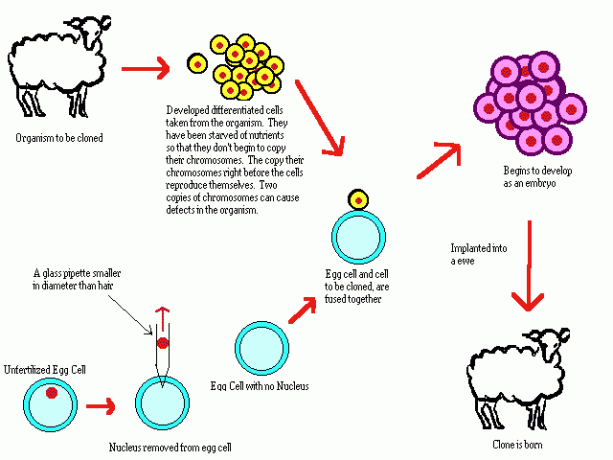
Cloning is a reproductive process that has asexual properties to create an exact replica of an organism. This cloning technique will produce a new species that is genetically the same as its parent which is usually done in a laboratory. The new species produced are known as clones. These clones are created by a process known as somatic cell nuclear transfer. This somatic cell nuclear transfer is a process that refers to the transfer of the nucleus from the somatic cell to the egg cell. Somatic cells are all cells in the body except germs. As for the mechanism, the nucleus of this somatic cell will be removed and inserted into an unfertilized egg that has a nucleus that has been or has been removed. The egg with its core will then be preserved until it becomes an embryo. This embryo will then be placed in the surrogate mother and will develop in the surrogate mother.
The success of cloning is cloning the sheep "Dolly". Dolly sheep is reproduced without the help of a ram, but instead is created from the presence of a mammary gland which is also taken from a female sheep. The mammary glands of Finndorset sheep were then used as a donor of cell nuclei and eggs of blackface sheep as recipients. The merging of the two cells utilizes an electrical voltage of 25 Volts which eventually forms a fusion between the blackface sheep's egg cell without a nucleus with the Finndorsat sheep's mammary gland cell. In a test tube the fusion results will then develop into an embryo which will then be transferred to the womb of the blackface sheep. So that the new species born is a species with identical characteristics to Finndorset sheep.
Genetic Engineering Processes and Techniques

In simple terms this genetic engineering process may or may include the following stages.
- Identify the gene and isolate the gene of interest,
- Make DNA/AND copies of RNAd,
- Attachment of cDNA to the plasmid ring,
- Insertion of recombinant DNA into the body/bacterial cell,
- Creating bacterial clones containing recombinant DNA,
- Product harvesting.
The genetic engineering process above, in practice, is to adopt the principles of the engineering technique below.
1. Gene cloning

Gene cloning is the initial stage of genetic engineering. Below are the steps in gene cloning, including:
- Cutting the DNA into fragments with a size of several hundred to thousands of kb (kilobase),
- Then the fragment is inserted into a bacterial vector for cloning.
- All kinds of vectors are designed to carry DNA of different lengths.
- Each vector contains only one DNA which is then amplified to form a clone in the bacterial wall.
- From each clone a number of DNA fragments will then be isolated which will then be expressed. This single-stranded DNA will be converted into double-stranded DNA with the help of DNA polymerase.
- The resulting DNA fragments were then cloned into plasmids to then produce cDNA banks.
2. DNA Sequencing
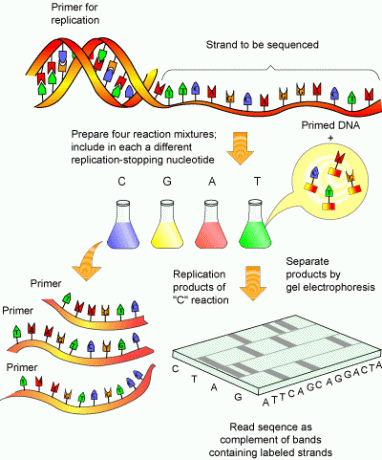
This sequencing is a technique for determining the base sequence of a DNA fragment which requires a long process and time. Currently, this process is automated, meaning that the sequencing carried out is possible on an industrial scale up to thousands of kilobases per day.
3. In-vitro gene amplification

It is a process of DNA amplification to synthesize complementary DNA fragments which starts from a primer chain known as the PCR (Polymerase Chain) technique reaction).
4. Gene Construction

Each of these genes consists of a promoter (that is, the region responsible for gene transcription ending in the terminator region), a gene This marker was selected (i.e. a gene that has a role in antibiotic resistance that helps in differentiating cellular changes), and also thank you. This gene construction contains at least a promoter region, a transcript region, and also a terminator region. Therefore, this gene construction is called an expression vector.
This gene construction implies a use in elements such as nucleotide synthesis by chemically, restriction enzymes that cleave DNA at specific regions, amplification of the DNA fragments by in vitro using the PCR technique, as well as connecting different DNA fragments with covalent bonds using enzymes ligase. After that, these fragments are added to the plasmid which is then transferred to the bacteria to form bacterial clones. This bacterial clone will then be selected and amplified. The addition of elements in the gene construction depends on an experimental goal, especially on the type of cell the construction will then be expressed.
5. Gene transfer into cells
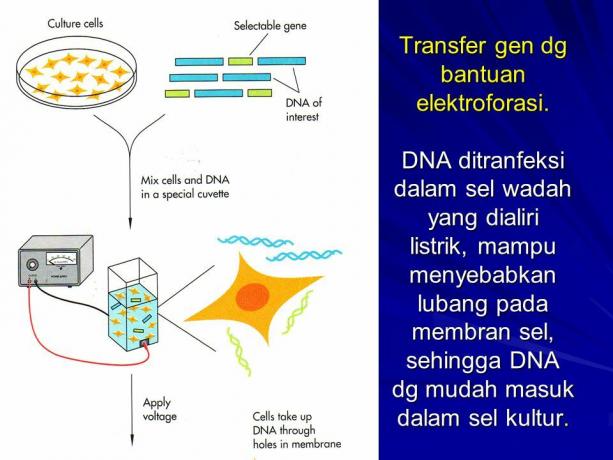
An isolated gene can or can be transcribed in vitro and its mRNA can also be transcribed in a cell-free system. To be effectively encoded and translated into protein, a gene must be transferred into the cell which naturally can or may contain all the necessary factors in the transcription process as well as translation. In practice, this gene transfer consists of a variety of techniques, including cell fusion, microinjection, electroporation, the use of chemical compounds, as well as injection using viral vectors.
Benefits of Genetic Engineering
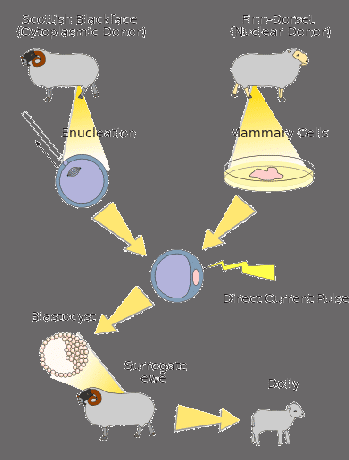
The development of genetic engineering provides many benefits for humans in various aspects of life. The benefits of genetic engineering when reviewed based on its aspects, include the following:
1. Industry Bidang
In the industrial field, the principle of genetic engineering is then used in efforts to clone bacteria for several functions certain examples such as producing chemical raw materials such as ethylene which is needed for the manufacture of plastics, dissolving the metals directly from the earth, produce chemicals that are used as a sweetener in the manufacture of all kinds of drinks, and so on.
2. Pharmaceutical field
In the pharmaceutical field, genetic engineering is used in the business of making proteins that are needed for health. This protein is a bacterial cloned gene that has a role in controlling the synthesis of drugs which if produced naturally would be expensive.
3. Medical field
The birth of genetic engineering provides many benefits in the development of medical science, including the following:
-
Insulin Manufacturing
The insulin that was formerly synthesized by mammals can now be produced by cloning bacteria. The insulin produced is also much better and more acceptable to the human body when compared to insulin synthesized from animals. -
Making Vaccines against AIDS Virus
Given that AIDS is a dangerous virus and can or can attack the immune system, prevention efforts should be made In this disease, researchers make a vaccine using genetic engineering in an effort to protect themselves against the transmission of the AIDS virus. -
Gene Therapy
Genetic engineering is also used in the effort of a therapy for genetic disorders, namely by: the insertion of several duplicate genes directly into the cells of a person who has an abnormality genetic.
4. Agriculture
In agriculture, genetic engineering is also widely used in gene insertion efforts it into the cells of plants so that it will then provide many advantages such as:
- Produce plants that are able to capture that light more effectively to increase photosynthetic efficiency.
- Produce plants capable of producing their own pesticides.
- Replacing the use of expensive but also widely used nitrogen fertilizers, namely by doing nitrogen fixation naturally, such as rice planting.
- Can or can be used to get new plants that are more profitable through gene transplantation, such as in the Solanaceae group.
5. Animal Husbandry
This is similar to the use of genetic engineering in agriculture, in the field of animal husbandry Gene insertion is also carried out into certain animal cells by applying engineering principles genetics. The most widely used animal is the cow. Engineering in the livestock sector provides many benefits, such as:
- Obtained a vaccine that can or can prevent malignant diarrhea in piglets.
- An effective vaccine was obtained against hoof and mouth disease, which is a malignant disease and is also contagious in cattle, sheep, goats, deer and pigs.
- Specific growth hormone testing is being conducted for cows which are expected to increase milk production.
Impact of Genetic Engineering

Genetic engineering has a dio role in the development of science for all kinds of fields of life. However, the use of genetic engineering does not only provide benefits, but also certain undesirable effects. Below are the impacts of the application of genetic engineering, including:
- Certain GMO crops may or may not cause allergies, nutritional differences, toxicity, and composition, and There is also the possibility of causing a bacterium in the human body to become resistant to an antibiotic certain.
- Then the transgenic organisms in the wild, if without supervision, of course they can also produce biological pollution which then has an impact on the disruption of an ecosystem as well as an increase in the prevalence of certain diseases.
- Inserting DNA or the genes of other organisms that are not related will be considered a violation of natural laws and is still difficult for society to accept. Therefore, genetic engineering carried out on humans is considered a moral deviation and an ethical violation.
Thus the explanation of the Definition of Genetic Engineering, Types, Processes, Techniques & Impacts, hopefully what is described can be useful for you. thank you
See AlsoUnderstanding Biotechnology
See AlsoDefinition of Discrimination
See AlsoDefinition of Zoology
